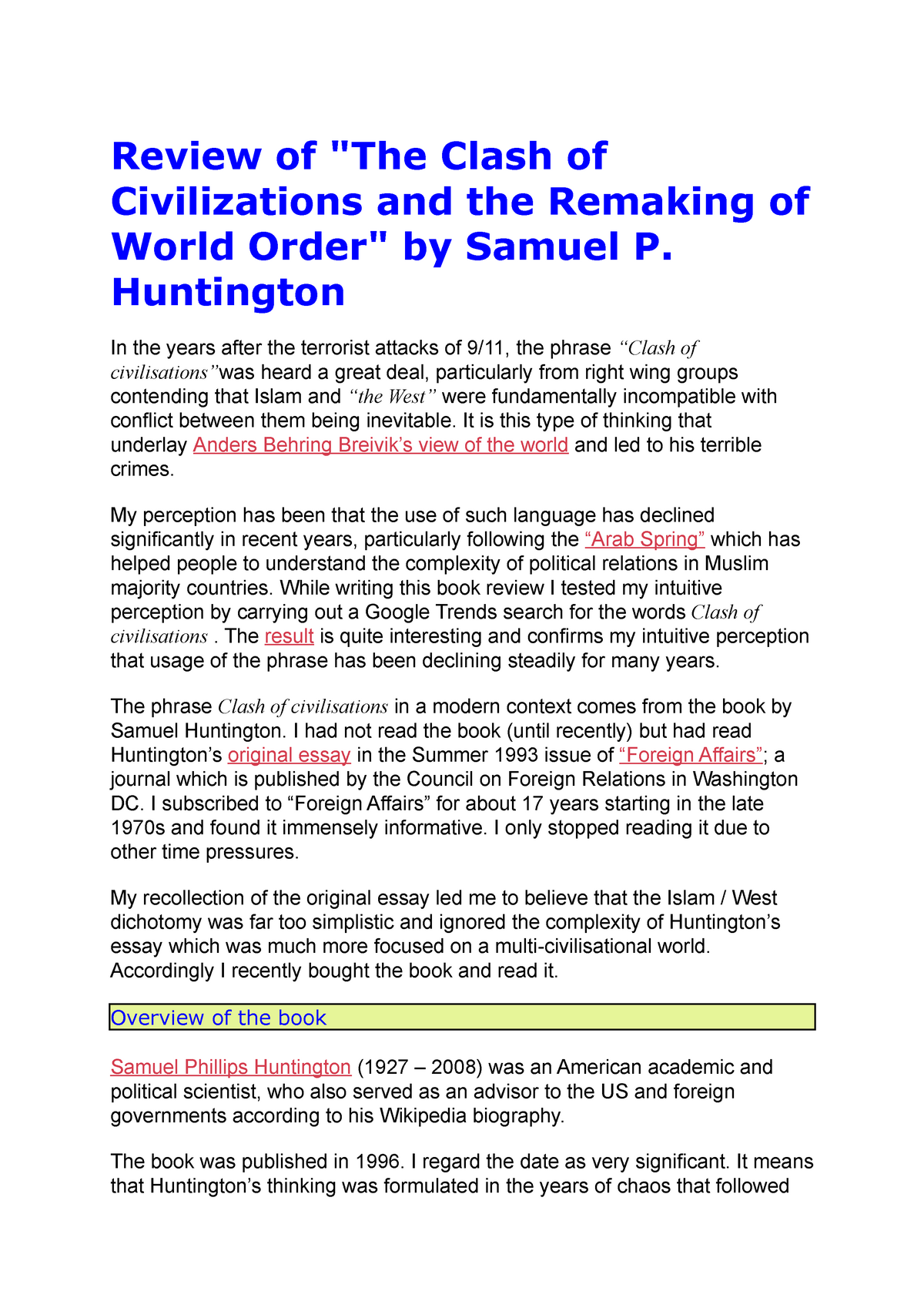Q.3 Critically analyze Samuel P. Huntington’s concept of “Clash of Civilizations”. Define its main characteristics and explain its devastating consequences on the different leading civilizations of the nations. 2016

Samuel P. Huntington’s concept of “Clash of Civilizations” is a controversial theory that suggests that the primary source of conflict in the post-Cold War era will be between civilizations or cultural entities, rather than between nation-states or ideologies. Huntington argued that the world is divided into several distinct civilizations, each with its own cultural and religious identity, and that these civilizations will inevitably come into conflict as they compete for resources and power.
The main characteristics of Huntington’s theory include:
- : According to Huntington, the primary source of conflict in the world is not between nation-states, but between civilizations. He identified eight major civilizations, including Western, Islamic, Hindu, and Confucian, among others.
- : Each civilization has its own distinct cultural and religious identity, which shapes its values, beliefs, and worldview. These identities are often deeply rooted and difficult to change, leading to clashes with other civilizations.
- : Huntington argued that conflict between civilizations is inevitable, as each seeks to promote its own values and interests. He suggested that these conflicts will be intensified by factors such as demographic changes, economic competition, and cultural diffusion.
- : According to Huntington, there are no universal values that apply to all civilizations. Instead, each civilization has its own set of values and norms, which may conflict with those of other civilizations.
The consequences of Huntington’s theory have been devastating for different leading civilizations. Some of the consequences are:
- : Huntington’s theory has contributed to an increase in tension between different civilizations. It has fueled a perception of “us vs. them” and created a sense of distrust and fear of other cultures.
- Huntington’s theory has contributed to the spread of misunderstanding and stereotyping of different civilizations. It has led to the promotion of negative stereotypes and a lack of understanding of other cultures and religions.
- : Huntington’s theory has contributed to an increase in conflict and violence between different civilizations. It has fueled conflicts in regions such as the Middle East, where the clash between Islamic and Western civilizations has resulted in decades of violence and instability.
- : Huntington’s theory has contributed to a sense of divisiveness and fragmentation in the world. It has led to the promotion of narrow national and cultural identities, which can hinder cooperation and collaboration between nations.
In conclusion, while Huntington’s theory of “Clash of Civilizations” provides an interesting perspective on the role of culture and religion in global politics, it has also had devastating consequences on the different leading civilizations of the nations. It has contributed to increased tension, misunderstanding, conflict, violence, and divisiveness between different civilizations, which has hindered cooperation and collaboration on a global scale.